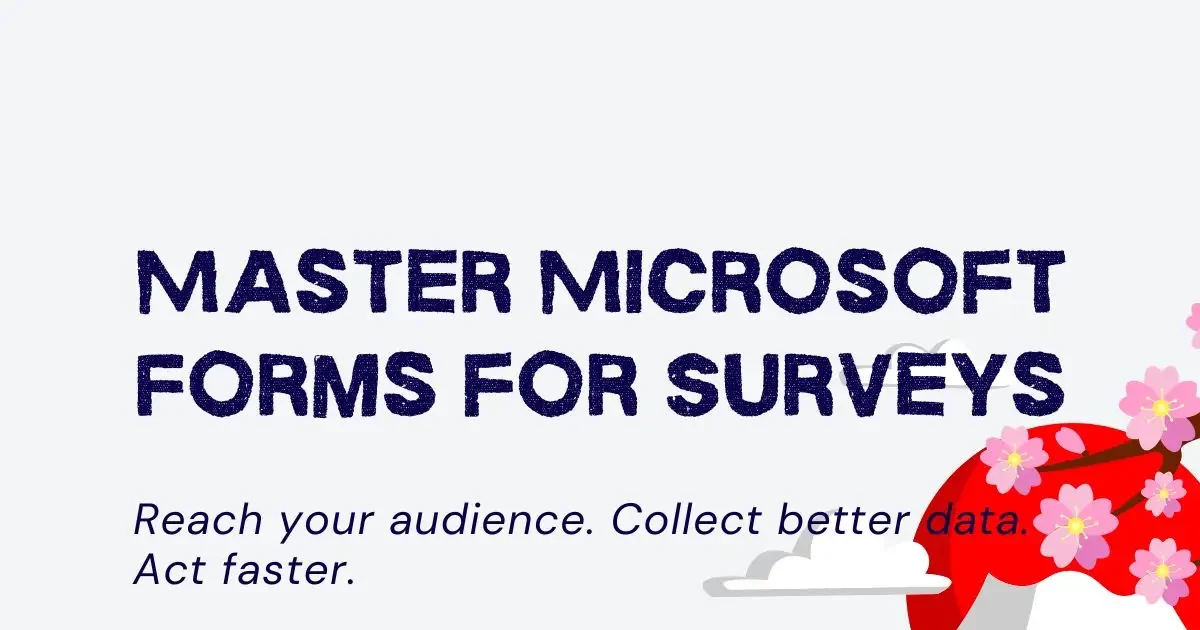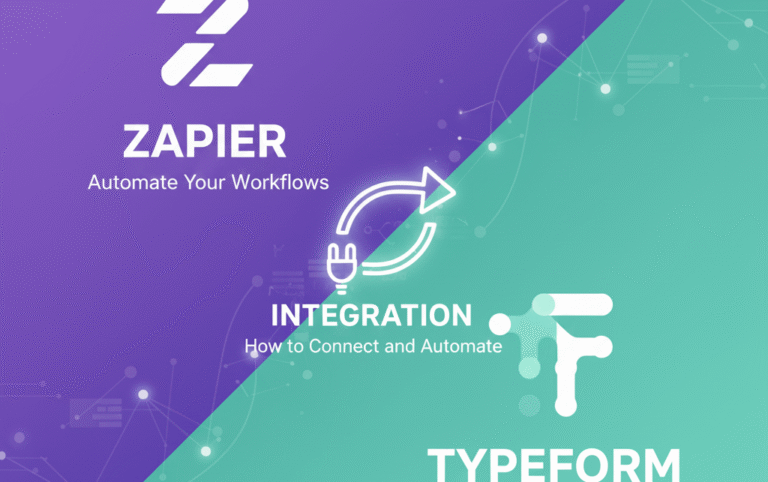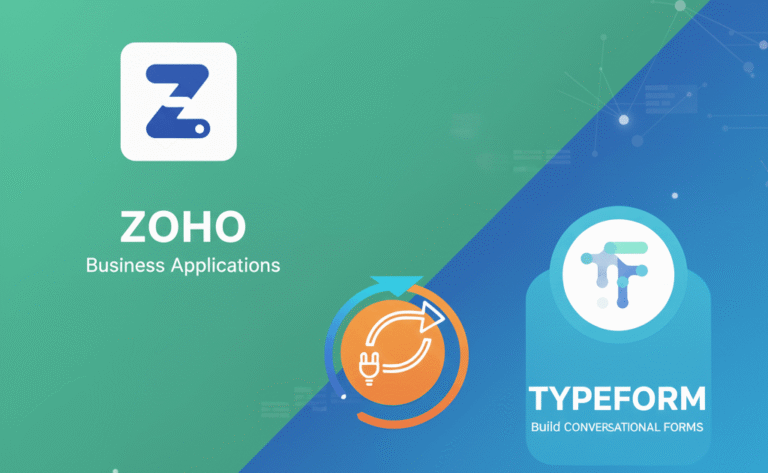Today, collecting high-quality data is essential for making informed decisions. The Microsoft survey tool, better known as Microsoft Forms, offers a sleek and straightforward solution for building surveys and gathering responses efficiently. Part of the Microsoft 365 suite, Microsoft Forms is ideal for individuals, teams, and institutions looking to collect insights with minimal technical effort. One of the most common questions asked is: does Microsoft have a survey tool? The answer is yes. Microsoft Forms serves as the official, cloud-based solution for surveys, polls, and quizzes. This article explores the complete capabilities of Microsoft Forms, including step-by-step instructions on how to create a survey on Microsoft Forms, its features, use cases, benefits, limitations, and how it compares to other tools like SurveyMonkey and Google Forms.
By the end, you’ll understand why this free Microsoft survey tool has become a favorite for educators, businesses, and organizations worldwide.
What is Microsoft Forms?
Microsoft Forms is a cloud-based Microsoft survey tool that enables users to create custom forms, quizzes, and polls. Designed with simplicity in mind, it integrates seamlessly with other Microsoft products such as Excel, OneDrive, and Teams. Whether you’re conducting academic research, collecting employee feedback, or evaluating customer satisfaction, Microsoft Forms offers a streamlined platform to design, distribute, and analyze surveys in real-time.
For many users, the question “does Microsoft have a survey tool?” arises because survey platforms are often associated with providers like SurveyMonkey, Qualtrics, or Typeform. Microsoft’s answer to this demand is Forms, which allows even non-technical users to design professional surveys within minutes. One major advantage is its cost. Microsoft Forms is a free Microsoft survey tool bundled with personal, business, and education Microsoft 365 subscriptions.
Compared to competitors, its integration within the Microsoft ecosystem makes it particularly powerful. Data flows seamlessly into Excel for deeper analysis, Teams for collaboration, and SharePoint for storage. Educators can use it for quizzes, while nonprofits can collect community feedback at no extra cost. To learn more, Microsoft provides an official Forms support center, making it easy to troubleshoot or explore advanced features.
How to Create a Survey on Microsoft Forms
Getting started with the Microsoft survey tool is quick and intuitive, making it a go-to platform for beginners and experienced researchers alike.
Here’s a step-by-step guide on how to create a survey on Microsoft Forms:
- Visit forms.office.com and sign in using your Microsoft account.
- Click “New Form” to begin creating your survey.
- Add a title and description to provide context.
- Use the “Add New” button to insert questions. Choose from multiple choice, text, rating, date, Likert scale, or ranking formats.
- Configure settings to control who can respond (specific users or anyone with the link).
- Customize the form’s theme using preset color schemes or background images.
- Preview your survey and test all branching logic.
- Share via email, link, QR code, or by embedding it on a website.
All responses are automatically saved and displayed in real time as summary charts. Users can also export responses directly into Excel for deeper analysis, which is ideal for organizations conducting structured research.
For more advanced survey distribution strategies, you may want to explore our guide on Survey Distribution Methods, which complements Microsoft Forms by showing where and how to share surveys for maximum reach.
Key Features of Microsoft Forms
The Microsoft survey tool provides a robust suite of features that support efficient survey design and data analysis. Its versatility ensures it meets both casual and professional research needs.
Some of the most valuable features include:
- Flexible Question Types: Multiple choice, ranking, Likert scale, text responses, and rating questions.
- Branching Logic: Create dynamic forms by showing or hiding questions based on previous answers.
- Real-Time Analytics: Instantly see bar charts and response summaries as results come in.
- Excel Integration: Seamless data export to Excel for deeper analysis.
- Multilingual Support: Build surveys in multiple languages to reach a wider audience.
- Collaborative Editing: Teams can co-design surveys simultaneously.
- Security and Permissions: Choose whether surveys are open to the public or restricted to specific users within your organization.
Benefits of Using Microsoft Forms for Survey Design
The Microsoft survey tool stands out for its integration, ease of use, and accessibility, especially for users already in the Microsoft ecosystem.
Some key benefits include:
- Seamless Ecosystem Integration: Works effortlessly with Excel, SharePoint, Teams, and Outlook.
- Cross-Device Accessibility: Use it on desktops, tablets, or smartphones.
- Low Cost: As a free Microsoft survey tool, it’s included with Microsoft 365 subscriptions at no additional cost.
- User-Friendly Interface: Perfect for non-technical users who want quick, professional surveys.
- Visual Reporting: Automatic graphs help you interpret results without needing external software.
- Customization Options: Add branding elements such as logos, headers, and themes.
Whether you’re an educator conducting student quizzes, a business measuring customer satisfaction, or an NGO running community assessments, Microsoft Forms delivers dependable functionality. Compared to Google Forms and SurveyMonkey, its value lies in simplicity, security, and Microsoft ecosystem synergy.
If you need professional help creating surveys with tailored logic, branding, or data analysis, visit our Professional Survey Design Services page to see how My Survey Help can support you.
Drawbacks of Microsoft Forms
While Microsoft Forms is powerful, the Microsoft survey tool does have certain limitations that may affect advanced users.
- Limited Branding Control: Compared to advanced tools like Qualtrics, customization is minimal.
- No Offline Mode: An active internet connection is required to design or complete surveys.
- Restricted Logic Features: While branching exists, it is less advanced than QuestionPro or Typeform.
- No Built-in Panels: Unlike some competitors, Microsoft doesn’t provide respondent pools.
These limitations mean that for enterprise-level projects requiring advanced analytics, offline support, or deeper customization, you may need to supplement Forms with tools like Qualtrics or Typeform. Still, for most business, academic, and nonprofit use cases, Microsoft Forms remains a strong free Microsoft survey tool.
For a side-by-side look at alternatives, you may want to explore our SurveyMonkey Guide, which breaks down features for different user needs.
Who Should Use Microsoft Forms?
The Microsoft survey tool is versatile and can be adapted across industries:
- Educators: Build quizzes, collect student feedback, and monitor performance.
- Human Resource Teams: Distribute employee surveys, collect training feedback, or manage event RSVPs.
- Small Businesses: Gather customer insights, run satisfaction surveys, or test new product ideas.
- Researchers & Analysts: Collect structured data for academic or industry reports.
- Nonprofits & NGOs: Capture community insights, manage event registrations, or measure program impact.
What makes it appealing across these sectors is its accessibility. The free Microsoft survey tool removes cost barriers, and its integration with Excel enhances data analysis. For organizations already using Microsoft 365, adoption is seamless.
Microsoft Forms vs Other Survey Platforms
| Feature | Microsoft Forms (Microsoft survey tool) | Google Forms | SurveyMonkey | Typeform |
|---|---|---|---|---|
| Price | Free (with 365) | Free | Limited Free | Limited Free |
| Collaboration | Real-Time | Real-Time | Limited | Limited |
| Branding Options | Moderate | Basic | Good | Advanced |
| Logic Branching | Basic | Basic | Intermediate | Advanced |
| Excel Integration | Seamless | Manual Export | Available | Google Sheets |
| Built-in Analytics | Yes | Yes | Yes | Yes |
Best Practices for Microsoft Forms
To get the most out of the Microsoft survey tool, apply these best practices:
- Test Before Distributing: Always preview your survey on desktop and mobile.
- Use Clear Language: Keep questions simple for diverse audiences.
- Keep It Short: Focus on essential questions to avoid fatigue.
- Apply Branching Wisely: Use conditional logic to guide respondents smoothly.
- Set Response Rules: Decide whether responses are anonymous or tied to an email.
One of the most frequently searched queries is how to create a survey on Microsoft Forms. Following these best practices ensures that once your survey is created, it’s effective and professional. If you’re new to surveys altogether, you can combine Microsoft Forms with expert consultation.
Our team at My Survey Help specializes in survey design and analysis, helping you set up smarter surveys using Microsoft Forms and beyond.
Conclusion
Microsoft Forms offers a streamlined, no-cost solution for designing and managing surveys. As the Microsoft survey tool, it provides everything from question variety to real-time analytics, making it an excellent choice for business, academic, and nonprofit settings. For anyone asking, “does Microsoft have a survey tool?” or searching for a free Microsoft survey tool, the answer lies in Microsoft Forms.
Whether you’re running a quick feedback poll or collecting structured data for an in-depth project, Microsoft Forms delivers reliable results with minimal setup. Its integration with Microsoft 365 makes it particularly valuable for organizations already invested in the ecosystem.






